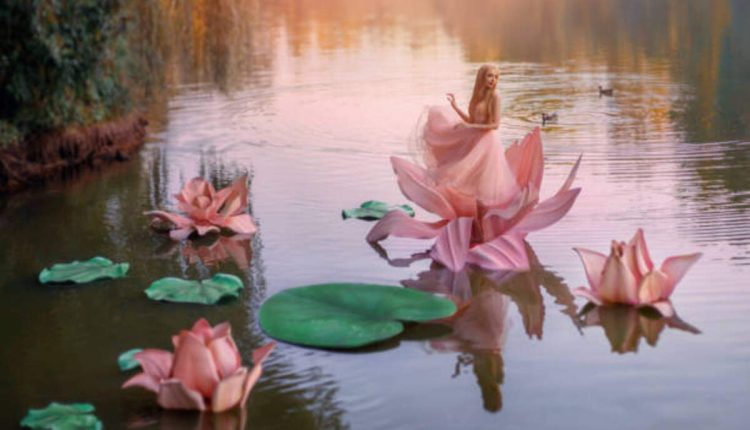Fairy flowers are unique types of plants found in forests and gardens. Not only are they visually striking and fragrant, but when blown by the wind, they produce musical sounds similar to wind chimes.
Cicely Mary Barker was an artist known for illustrating numerous books about fairies and flowers, publishing seven Flower Fairies collections during her lifetime and one posthumously.
What is a Fairy Flower?
Fairy flowers are small plants often associated with fairy stories. These colorful, delicate blooms often grow near quiet parts of forests or fields and may even possess magical powers to protect people.
Folklore tells us that many flowers are associated with various fairies. Roses, daisies, and lavender have their fairy, with different personalities and interests that come to life when related to these blooms. Furthermore, their physical appearance changes depending on which flowers they represent.
Fairy flowers are beautiful pieces of nature with medicinal qualities. You can use them to make an herbal tea that can relieve sleep problems and anxiety and treat other conditions, including inflammation and digestive issues.
A popular way of using fairy flowers is herbal tea, typically using lavender, chamomile, and oat straw as ingredients. This calming beverage has also promoted healthy skin and increased circulation.
Why are Fairy Flowers Special?
Fairies are often associated with flowers, which they give to humans as gifts in stories. Many believe that picking one up could bring you good fortune.
Bluebells, for instance, are associated with fairies through legend and have an intoxicating fragrance that conjures memories of magic created by fairies. Primulas are known for their magical properties and often can be found growing near fairy groves.
Other fairy flowers include sylvan chimes, which produce an exquisite sound when struck by wind gusts, and frost blooms resembling northern lights in color and appearance. Both varieties act as messengers of dreamtime.
Fairies love lush areas filled with life and are attracted to trees with twisty branches and mysterious leaves – particularly oaks, yews, holly, and rowan trees; however, they also find joy in hawthorn and birch trees!
Our Fairy Flower Creme is packed with all the magical properties found in calendula, comfrey, Linden leaves, Mugwort roots, Rose petals, and Lavender to provide soothing hydration throughout the day for all skin types. Providing extra hydration throughout your day with just one application is critical! Our moisturizing formula makes for gentle yet effective application regardless of skin type!
What are the Meanings of Fairy Flowers?
Flowers have always held a special place in our lives, symbolizing fertility, good luck, health, and love. Flowers also play a pivotal role in religious rituals like weddings, funerals, and birthday celebrations.
Fairy flowers have long been associated with mysticism and magic. If a traveler encounters one, it could serve as a welcoming sign from nature, be it a harebell in Scotland, a bluebell in England, a tulip from Holland, or a lotus from India.
Fairy tales often feature fairies living inside flowers. This may have inspired Hans Christian Andersen’s tale about Thumbelina, whose father plants her in a lotus as an alternative wife following her death and thus continues their family’s legacy.
Other sources for this motif can be found in classical mythology and the French coat of arms; classical mythology includes Iris or fleur-de-lis characters on France’s coat of arms as examples of nature spirits such as Iris; Victorians adopted the notion of fairies living among flowers by way of Cicely Mary Barker’s Flower Fairies books, creating the flower fairy world in their imaginations.
These works feature one flower fairy for every month of the year, each bearing a specific meaning – for instance, Plumeria symbolizes integrity and loyalty, while Mirabilis represents dream beauty. Furthermore, each fairy’s design also takes cues from their respective flowers (Triandra’s ruffles resemble those found on scabiosa or scabiosa blossoms, while her petals on Lily-of-the-Valley Fairies look like Foxglove flowers).
What are the Symbols of Fairy Flowers?
Flowers have long been used as symbols for various reasons, signifying purity, healing, and even as remedies against disease. Daffodils are symbols of rebirth and renewal, while daisies represent innocence, and roses are signs of love with their deep red hue and sweet fragrance.
The iris has come to symbolize hope, faith, and wisdom while the multi-colored petals of tulips symbolize luck and prosperity; orchids symbolize grace and femininity while Victorian gravestones would often include flowers as symbols of their attributes; for instance, the Virgin Mary-related symbol lily came to represent purity and majesty.
This exhibition showcases around 45 original illustrations by Cicely Mary Barker from her Flower Fairies books. Alongside botanical specimens from the National Museum Liverpool, it explores their sources of inspiration and the flora depicted. Many plants found here can also be found elsewhere in the region; each illustration has a poem explicitly written to suit it and highlights unique qualities about each fairy flower and the character depicted.










